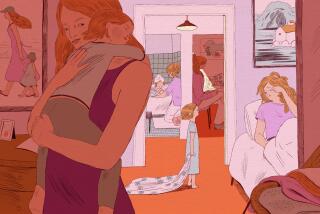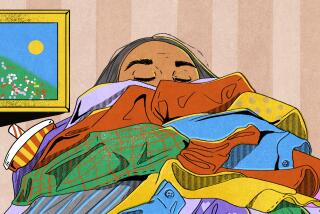Solving the Toothbrush Crisis
- Share via
We have just experienced another toothbrush crisis. In theory, the solution is simple: Each person is assigned a different color. The crisis happens every time one of the girls comes home from college or someone goes to the dentist for a cleaning and brings home a new toothbrush.
When this problem comes up, I must get everyone in the family together at the same time (a feat in itself), and we each declare which is ours. Some kids have one upstairs and another downstairs in case the other bathroom is occupied when he or she is late leaving for work or school. At our latest gathering there were 15 brushes out and only six people living in the house.
Large families have problems unique to their circumstance. They often have to take extra steps to establish ownership.
As a young girl, I remember the media coverage of a couple that had six babies all at once. Everyone wanted to know the details of how they organized the care of so many little ones. A fact that stuck in my mind was that each child was dressed in the same color of clothes day after day so that the adults could identify them. At the time I thought it was sort of a dumb idea--yellow baby, pink baby, green baby.
Identifying System
Now I can see that large families who have a system of identifying personal belongings have fewer hassles. In most cases, solutions emerge naturally.
One family assigned each member a color. They did not necessarily dress their children in those colors, but used the system to code possessions whenever necessary: drinking cup in the bathroom, toothbrush, bath towel, appropriate color tag in clothing and embroidery stitch in toe of sock. Every system has its drawbacks. They couldn’t decorate the bathroom with one color scheme, but when Mom found a red towel on the floor she knew it belonged to No. 1 child.
Another family used the dot system. The first child’s possessions had one black permanent-marker dot on them. The second child had two dots. That way, when child No.1 outgrew something, it could easily be passed on to the next child and identified by adding another dot of ink. There were little black dots on the toes of socks, on the labels of clothes and in shoes.
Some families don’t worry about individual possessions--everything is communal. Family members just grab two socks out of the family basket. (They only buy white tube socks.) After a towel is used, it is tossed into the hamper. A glass is used once and then set aside to be washed.
Position can be an effective assignment method. For example, at my house, we have a long line of towel rods. Bath towels are hung in chronological order: the first towel is Dad’s, second Mom’s, third towel belongs to child No.1, fourth towel belongs to child No. 2, etc.
The Coaster System
The most successful identification program has been for drinking cups. I have a set of 12 coasters. I put one coaster out for each person that is living at home and label it with their name. This line of glasses sits in the kitchen window unless we expect dinner guests. After getting a drink of water, they replace the glass on its spot. It saves extra washing and messy counters, especially in the hot summer when everyone gets more drinks.
An obvious solution is to put your name on things. I write our family name on sports equipment, camping supplies, garbage cans, tools and even the broom with a permanent marking pen.
Don’t forget swim suits and towels. I discovered that the local fabric store has the address of a mail-order company that will print inexpensive cloth labels. I will not let my children wear a new coat, gym suit or gloves until a name tag has been sewn in the lining. That little effort has paid off again and again. One summer we were called back to school to pick up a coat, backpack and various hats and gloves that had shown up in the lost and found. Because the family name was on them, ownership could be identified. Think of the money we saved. A 10-cent label brought back a $40 coat.





